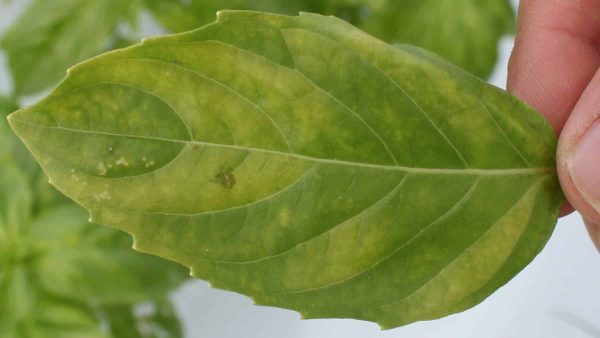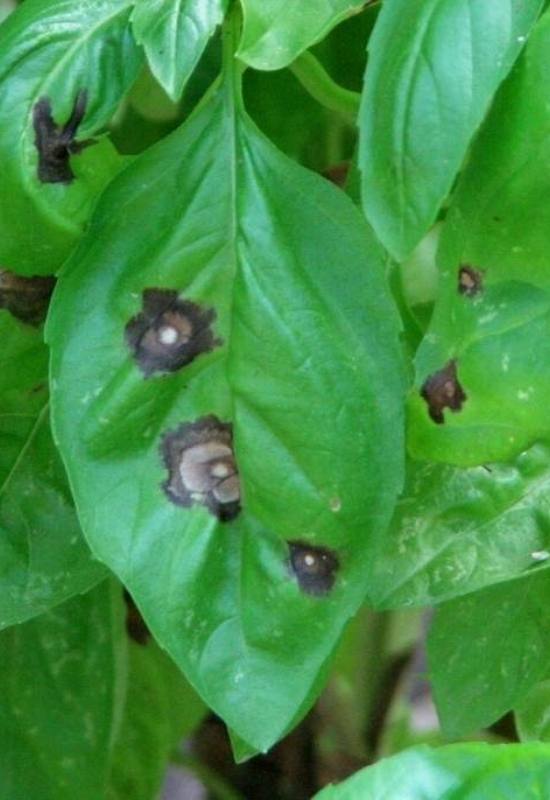Basil stands out as a cherished herb, gracing gardens and kitchens worldwide with its bright green leaves, enticing aroma, and fresh taste. However, many growers encounter a frustrating issue: basil leaves turning yellow. Noticing your thriving plant develop yellow patches or drooping leaves can be concerning, but often this yellowing signals an environmental factor that can be corrected. This guide delves into five typical causes behind yellow basil leaves and offers practical tips to revive your plant’s vitality.
1. Overwatering: The Leading Cause
Why It Occurs
Basil is quite sensitive to too much moisture. When the soil stays overly wet, roots struggle to access oxygen, which can lead to root rot. The earliest sign is yellowing leaves, usually beginning at the plant’s base.
How to Remedy
- Test the soil moisture by inserting your finger 1–2 inches deep. If it feels damp, pause watering.
- Enhance drainage by choosing pots with drainage holes and using a well-draining soil blend, such as peat or coconut coir mixed with perlite.
- Water thoughtfully: only when the top inch of soil is dry, and apply water directly to the soil around the base, avoiding the leaves.
- Prune away yellow or wilted leaves to help the plant focus energy on healthy growth.
Pro Tip: If root rot is advanced, carefully remove the plant, trim off affected roots, and replant in fresh, dry soil.
2. Underwatering: When Lack of Water Shows
Why It Occurs
While overwatering is common, insufficient watering can also cause yellow leaves. Without adequate moisture, basil becomes stressed, leaves lose their firmness, and yellowing often starts with the lower leaves.
How to Remedy
- Maintain consistent watering to keep the soil slightly moist, especially during hot weather or indoor growing.
- Increase humidity indoors by misting leaves or placing a humidity tray nearby.
- Apply a thin layer of organic mulch outdoors to help retain soil moisture during warm days.
Pro Tip: Avoid letting the soil dry out completely between waterings, but also prevent sogginess. Striking the right balance is essential.
3. Nutrient Deficiency: Missing Vital Elements
Why It Occurs
Basil needs a continuous supply of nutrients, especially nitrogen, to keep its leaves vibrant green. Yellowing often points to a nutrient shortfall. Nitrogen deficiency typically causes older leaves to yellow first, while younger leaves stay green.
How to Remedy
- Use a balanced, water-soluble fertilizer or compost. For a nitrogen boost, select a fertilizer with a higher nitrogen ratio (the first number in the N-P-K formula).
- Avoid overfertilizing, which can damage roots and worsen yellowing. Always follow the product instructions.
- Incorporate organic amendments like compost, worm castings, or diluted fish emulsion for gentle, natural nourishment.
Pro Tip: After fertilizing, watch for lush, green new growth within a few weeks as a sign of recovery.
Environmental Stress: Temperature, Light, and Drafts

Why It Occurs
Basil thrives in warm conditions, so abrupt temperature shifts, chilly drafts, or inadequate lighting can lead to yellowing leaves. Exposure to cold: When temperatures drop below 50°F (10°C), basil’s growth slows and leaves may turn yellow. Excessive sunlight: Strong, direct sun can burn the leaves, resulting in yellow or brown spots. Insufficient light: Lack of enough light weakens the plant, causing leaves to fade or yellow.
How to Remedy
- Maintain optimal warmth: Keep basil in a temperature range of 65–85°F (18–29°C).
- Manage light exposure: Ensure 6–8 hours of bright, indirect sunlight daily. For indoor plants, a bright windowsill or supplemental grow lights are ideal.
- Shield from drafts: Avoid placing basil near air conditioners, heaters, or drafty windows.
- Gradually introduce outdoor basil to direct sunlight to prevent leaf scorch.
Pests and Diseases: Hidden Challenges
Why It Happens
Basil is vulnerable to various pests and fungal infections that stress the plant and cause yellowing. Common culprits include:
- Aphids: Small insects that extract sap, leading to yellowing and curling leaves.
- Spider mites: Create tiny yellow spots and fine webbing on leaves.
- Fungal diseases: Conditions like downy mildew or root rot often result from overwatering.
How to Address
- Regular inspections: Examine leaves, especially undersides, for pests or disease symptoms.
- Natural pest control: Use insecticidal soap or neem oil sprays; ladybugs can help reduce aphid populations.
- Prevent fungal issues: Avoid watering from above and promote good air circulation.
- Remove infected leaves promptly and sterilize gardening tools to prevent spread.
- Isolate affected plants until fully recovered to protect others.
Additional Tips for Vibrant, Healthy Basil
- Prune consistently: Cutting back older or yellowing leaves encourages fresh growth.
- Pinch growing tips: This technique fosters bushier plants instead of tall, spindly ones.
- Rotate plants: Turn pots regularly to ensure even light distribution.
- Repot when roots become crowded to improve nutrient absorption and prevent yellowing.
- Harvest carefully: Avoid removing more than one-third of the plant at once to reduce stress.
Summary
Yellow leaves on basil signal a problem but don’t mean the plant is doomed. By recognizing common causes—such as watering issues, nutrient shortages, environmental stress, and pests—you can diagnose and treat the problem effectively. Healthy basil boasts lush, green, fragrant leaves, and with attentive care, you can enjoy a thriving herb garden year-round. Consistent watering, balanced nutrition, proper lighting, and vigilant pest management are key to robust, flavorful basil. Addressing these factors promptly not only prevents yellowing but also enhances growth, flavor, and longevity, transforming your garden or kitchen into a flourishing green oasis.
Basil Yellowing Causes & Solutions
-
Overwatering:
- Excess moisture causes root rot and yellow leaves, starting at the bottom.
- Check soil moisture; water only when top inch is dry.
- Use well-draining soil and pots with holes.
- Prune yellow leaves; trim roots and repot if root rot is severe.
-
Underwatering:
- Lack of water stresses basil, causing yellow, wilted leaves.
- Water consistently to keep soil slightly moist.
- Increase humidity indoors by misting or using a humidity tray.
- Mulch outdoors to retain moisture.
-
Nutrient Deficiency:
- Nitrogen deficiency causes older leaves to yellow.
- Use balanced or nitrogen-rich fertilizer carefully.
- Apply organic amendments like compost or fish emulsion.
- Avoid overfertilizing to prevent root damage.
-
Environmental Stress:
- Cold temperatures (<50°F/10°C), too much or too little light, and drafts cause yellowing.
- Maintain 65–85°F (18–29°C) temperature.
- Provide 6–8 hours of bright, indirect light.
- Protect from drafts and gradually acclimate to sunlight.
-
Pests and Diseases:
- Aphids, spider mites, and fungal infections cause yellow spots and leaf damage.
- Inspect regularly; use insecticidal soap, neem oil, or natural predators.
- Avoid overhead watering; ensure good air circulation.
- Sterilize tools and isolate affected plants.
Additional Care Tips:
- Prune yellow or old leaves to encourage growth.
- Pinch tips for bushier plants.
- Rotate plants for even light exposure.
- Repot if roots are crowded.
- Harvest no more than one-third at a time.
Conclusion:
Yellow leaves signal environmental or care issues, not plant death. Addressing watering, nutrients, light, temperature, and pests promptly restores basil health, ensuring lush, flavorful growth year-round.
